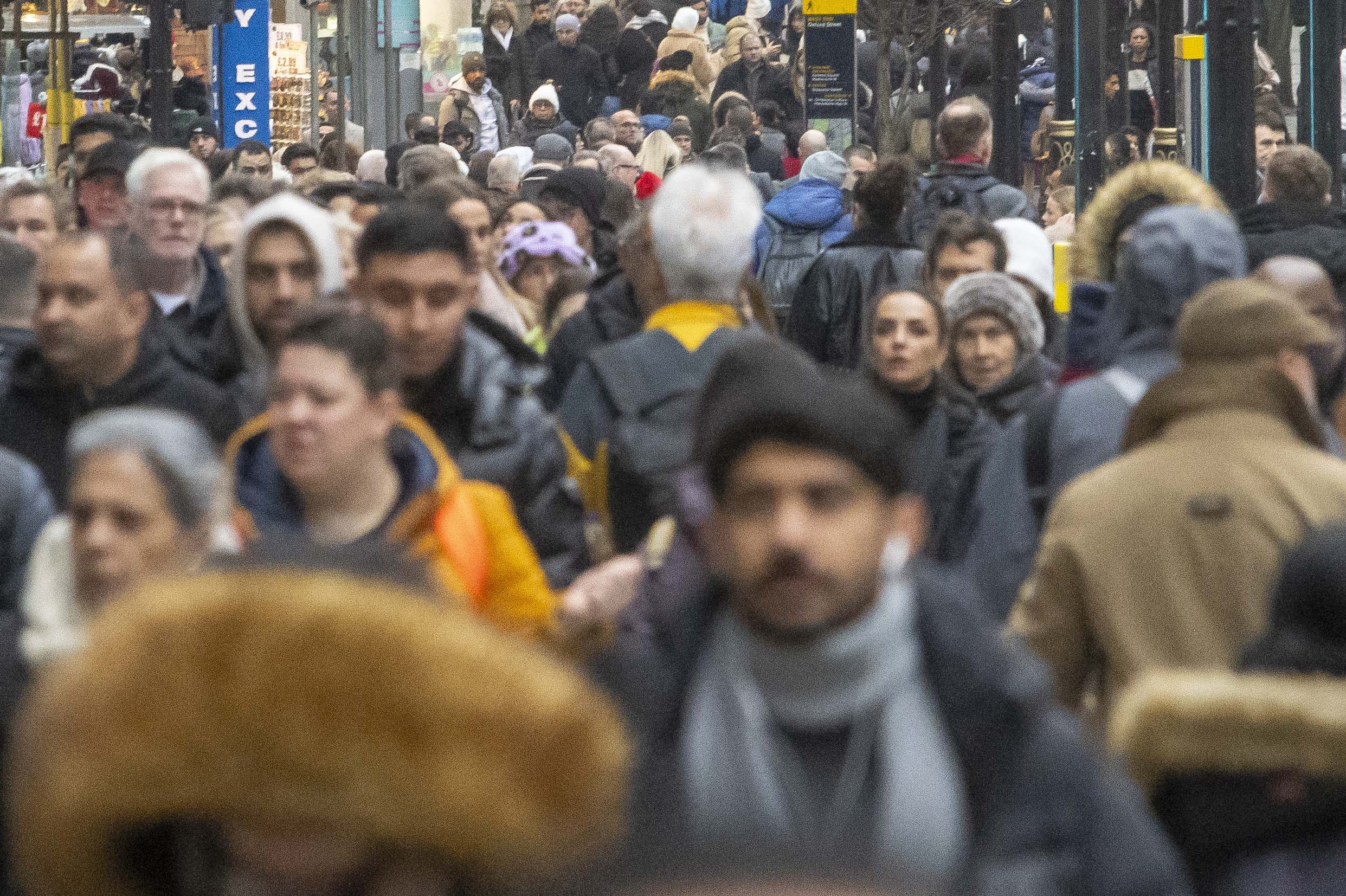The UK population has seen the second-largest annual rise in more than 75 years, fuelled by spiralling migration, official estimates show.
The number of people in the UK grew by more than three-quarters of a million in the year to June 2024, with the boom primarily driven by international migration, while births and deaths accounted for only a small proportion of the change.
There were a record 69.3 million people estimated to be in the UK in mid-2024, up 755,254 (1.1 per cent) from 68.5 million in mid-2023.
It is the second-largest numerical jump since at least 1949, when comparable data begins, behind only the rise of 890,049 that took place in the preceding 12 months from mid-2022 to mid-2023.
While net migration – the difference between people moving to the country and leaving – accounted for 98 per cent of the total increase in population, it is now falling, with the number of people coming to the UK for study and work now reducing year-on-year.
Figures from May this year show that the difference between people entering and leaving the UK totalled 431,000 in the year to December 2024 – the lowest rate since June 2021.
It comes as Sir Keir Starmer introduces ID cards for all UK workers in a bid to crack down on illegal working.

The number of births in the UK in the year to mid-2024 was the lowest for at least 42 years. The population grew the fastest in England, with 1.2 per cent growth, compared to Scotland (0.7 per cent), Wales (0.6 per cent) and Northern Ireland (0.4 per cent). There were more deaths than births in Wales and Scotland during this period.
Some 1,235,254 people were estimated to have immigrated to the UK in the 12 months to June 2024, while 496,536 were likely to have emigrated, meaning net migration was 738,718.
Nigel Henretty of the ONS said: “The UK population has increased each year since mid-1982.
“The rate of population increase has been higher in recent years, and the rise seen in the year to mid-2024 represents the second-largest annual increase in numerical terms in over 75 years.
“Net international migration continues to be the main driver of this growth, continuing the long-term trend seen since the turn of the century.”

The prime minister has said that new plans for a digital ID, announced on Friday, will be an “enormous opportunity” for the UK and make working illegally tougher.
Digital ID will become mandatory as a means of proving the right to work, and will be available to UK citizens and legal residents by the end of this parliament.
Employers are already obliged to check people’s right to work through the use of digital visas, which were rolled out fully to foreign nationals at the beginning of this year.
Sir Keir said that IDs would help ordinary citizens “prove your identity to access key services swiftly – rather than hunting around for an old utility bill”.
However, Josephine Whitaker-Yilmaz, head of advocacy at migrant charity Praxis, said IDs would “entrench discrimination, supercharge the hostile environment and create a surveillance state nobody asked for”.
She added: “Migrants already have to prove their rights to work and rent with a digital visa. It’s hard to see what difference a digital ID will make, other than requiring all of us to sacrifice our civil liberties.”
Politics live: Starmer says next election will be ‘open fight’ with Reform
UK faces ‘battle for the soul’ of the country, says Starmer amid Reform threat
Starmer launches fightback against ‘lies and division’ of Farage’s populism
Digital IDs will be mandatory to work in UK, Keir Starmer says
British coupled detained by Taliban for months give verdict on Afghanistan return
Experts warn of worrying risks if people take weight loss jabs with no prescription







